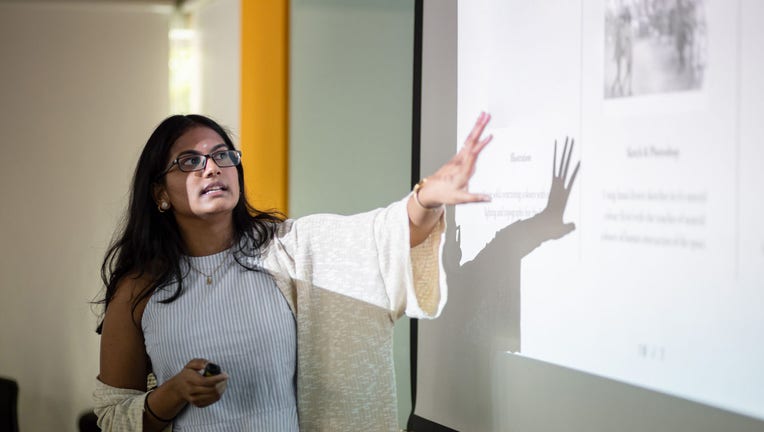Biden may cut free community college from economic package

President Biden told a group of lawmakers on Oct. 19 that he plans on paring down his $3.5 trillion economic plan. (iStock)
President Joe Biden told centrist and progressive lawmakers on Tuesday that he expects to drop tuition-free community college from the administration's extensive spending package, The Associated Press reported.
This is part of an effort to gain support among more moderate Democrats like Sen. Joe Manchin (D-W.Va.), who has said he would oppose an economic package that will cost more than $1.5 trillion. Progressive Democrats initially wanted to invest $3.5 trillion, but will likely need to make sacrifices to reach an agreement before the Oct. 31 deadline.
Free community college was once a top priority for the White House — and a key issue that Biden campaigned on as a presidential candidate.
"It’s not the robust vision the president wants or that we wanted," Rep. Ro Khanna (D-Calif.) told The Associated Press.
The president needs the support of all 50 Senate Democrats and almost all of the House representatives in his party in order to pass the spending bill since Republicans are fully opposed to the Biden administration's plans.
With free tuition for community college off the table, keep reading to see how you can pay for higher education costs with federal and private student loans. If you decide to borrow private loans, be sure to compare interest rates on an online marketplace like Credible.
BEST PRIVATE STUDENT LOANS FOR FALL 2021
How to pay for community college
Community college tuition is typically much less expensive per semester when compared with both public and private four-year schools. Still, the tuition costs of earning an associate degree or completing a certificate program at a community college can be a roadblock for low-income students.
If you don't meet the eligibility requirements for free college after high school graduation, it may be necessary to borrow student loans to cover community college expenses and fees.
COMPARING PRIVATE STUDENT LOAN RATES CAN SAVE BORROWERS $5K+, DATA SHOWS
Explore your federal loan options by filling out the FAFSA
Federal student loans are a good first choice for many part-time and full-time students because they come with protections like income-driven repayment plans (IDR), COVID-19 administrative forbearance and student loan forgiveness programs.
You can determine how much aid you qualify for by filling out the Free Application for Federal Student Aid (FAFSA). This form is used to determine how much state aid and federal loans you'll receive based on financial need.
But federal aid doesn't always cover the full cost of four-year colleges — there's even a chance it won't cover the full cost of community college tuition needed to complete a degree program. In that case, many prospective and current students turn to private loans to help them pay for school.
1 IN 8 FAMILIES BORROWED PRIVATE STUDENT LOANS IN 2020-21 SCHOOL YEAR
Borrow private student loans to bridge the financing gap
Whereas federal student loans are issued by the federal government, private student loans are issued by credit unions, banks and other financial institutions. Federal loan interest rates are static across all students who apply during the same academic year, while private student loan rates vary between lenders.
Private student loan rates are determined based on several factors, such as the loan amount and length, as well as a borrower's credit score and debt-to-income ratio. Because interest rates can vary widely, it's important to compare offers across multiple private student loan lenders before you borrow.
You can browse interest rates from real lenders in the table below and visit Credible to see your estimated student loan rate without impacting your credit score.
AVERAGE PRIVATE STUDENT LOAN INTEREST RATES REMAIN LOW, DATA SHOWS
Research scholarships and local aid programs
In addition to borrowing student loans to cover community college tuition, you might want to see if you're eligible for tuition-free college programs and other scholarships for community college students.
For example, the city of Boston offers a tuition-free community college plan that covers up to 3 years of community college tuition for low-income students. The Boston Bridge program allows these students to finish their education at an in-state four-year institution in Massachusetts at no cost.
Not all borrowers will be eligible for programs like this since they're dependent on the area in which you live, as well as your gross income. To discuss your alternative options for paying for community college, get in touch with a knowledgeable loan officer at Credible.
HERE'S WHY VARIABLE-RATE STUDENT LOAN REFINANCING MAY BE A SMART MOVE
Have a finance-related question, but don't know who to ask? Email The Credible Money Expert at moneyexpert@credible.com and your question might be answered by Credible in our Money Expert column.

